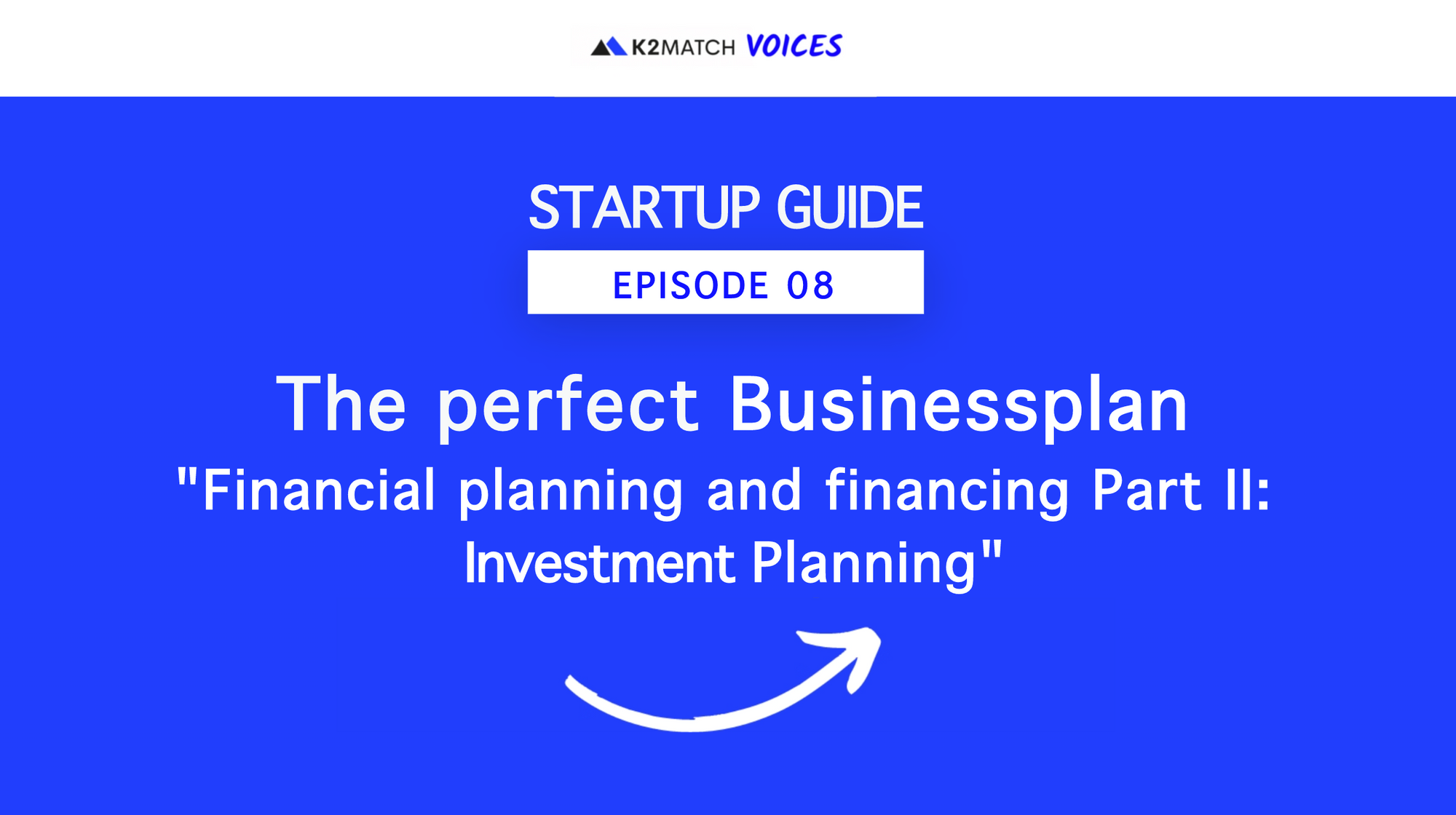Financial planning and financing Part II: Investment Planning

Investment Planning
Business administration defines the term "investment" very differently. For the purpose of this financial and liquidity planning, a simple and pragmatic definition will suffice: While the expenses focus on the items that regularly occur in your company (e.g., monthly rental expenses), the "investment" planning considers all those items that rather have a "rare" character and are "long-lived". Many assets that you purchase for your company will be used for a longer period for example your PC or your office and business equipment. Since these assets lose value over time, the "depreciation" of long-lived assets is calculated under the term "wear and tear for assets" and recorded as "depreciation expense" in the income statement. Important for your liquidity planning is how the cash flows develop: For a car purchase, for example, consider that the total purchase price (incl. sales tax) is taken from your account in the month of the car purchase, whereas the sales tax is reimbursed by the tax authorities in the following month. Therefore, it is important to plan investments for a longer period. Even if they are rather rare and have to be considered irregularly in your business, they are by no means "one-off" or limited to the start-up phase of the business. For example, plan now for possible expansion during your self-employment. Draw up an investment plan for all assets that are scheduled to be used in the business for more than one year and whose acquisition value is more than € 800. The acquisition costs must be allocated to the "normal useful life". The length of the "normal useful life" has been determined by the tax authorities - as already mentioned above - in so-called "wear and tear for assets" tables. By dividing the acquisition costs by the operational useful life (expressed in months), you get the monthly depreciation expense, which you transfer to the income statement. The acquisition costs for your investments need also to be put in the liquidity planning. Assets with acquisition costs between € 250 net and € 800 net are called "low-value assets". These must also be accounted for, but they may be fully depreciated in the month of acquisition. Acquisitions with a net value of less than € 250 are called "consumables" and are accounted for as such.
Questions to be answered in this chapter:
- Which durable assets (purchase price > 800 € net) do you want to purchase for your company and when?
- Create a list with the date of the planned acquisition of the assets, the net purchase price, the "normal useful life" of these assets in months in months and the resulting monthly depreciation expense ("wear and tear for assets")
- Which "low-value assets" in the purchase price below 800 € net, but higher 250 € net, do you want to purchase for your company and when?
- Create a list with the date of the planned acquisitions of the Low Value Assets and their net purchase price.
- Transfer the respective monthly depreciation amounts from the investment and the list of Low Value Assets to the income statement.
- Transfer the investment totals (purchase prices) of the long-lived assets and the Low Value Assets to the cash flow statement.
The Article was provided by K2MATCH and inspired bei NUK

